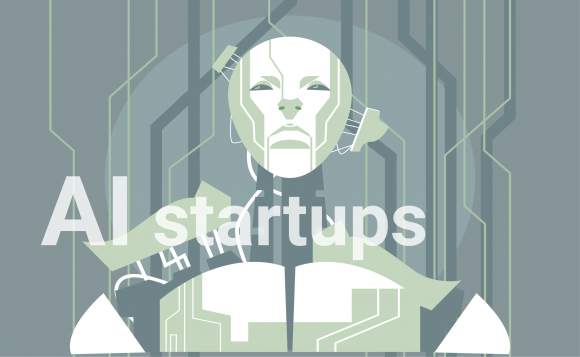
The technology landscape has featured a growing interest in artificial intelligence. The growing interest has led to increased funding in the field with various startups receiving funding so that they can grow and potentially change the whole technology ecosystem with new artificial intelligence software and hardware. Many startups have been seen to offer a wide range of services that rely on artificial intelligence such as automated data collection, real-time data analysis as well as an assessment of Artificial intelligence applications in the real world.
- Toutiao
The company was founded in the year 2012 by Zhang Yiming in China. Currently, the company is worth an estimated 3.1 billion dollars. The firm deals with data analytics, big data, the internet service provision, machine learning as well as social networking. The company offers a platform the gives users the capability to discover a world of content while utilizing the power of artificial intelligence. The company prides itself in using the concept of natural language processing as well as computer vision in the process of extraction of entities and keywords as the features from each piece of content. The feed reader on their platform uses machine learning to generate content for the users based on the data from their social networking accounts and set preferences by the user.
- SenseTime
SenseTime is also a firm founded in China. The company was founded in the year 2014 by Xiaolan Xu. The startup deals with artificial intelligence, computer vision, related software as well as image recognition. SenseTime concentrates on the development of facial recognition technology which is used primarily in the processes of payment and picture analysis. The technology can be easily and effectively applied in security systems and bank card verification. Currently, the technology is being used by over two hundred companies in China including Huawei Technologies Company Limited and the China Mobile Communication Company. Tests have shown that the face recognition technology has an error rate that is below one in one hundred thousand. Currently, the startup is valued at 1.6 billion dollars.
- Argo AI
Argo AI is the biggest Artificial Intelligence startup currently in the United States of America. The company is growing rapidly due to increase investment and research in artificial intelligence, autonomous cars as well as robotics. The company was founded in the year 2017 by Bryan Salesky and Peter Rander. Argo AI targeted to deal with the challenging application of artificial intelligence in the process of creating self-driving cars. The company also has a hand in robotics and computer science in a bid to make driverless cars a normal reality for the larger population in the world. Argo AI is at the forefront of implementation of the concepts of artificial intelligence, machine learning in building driverless vehicles that are primarily safe and efficient when being used by people. The transformations they have made a billion-dollar startup with the company reaching this valuation in the year 2018.
- Kreditech
Kreditech is the biggest startup dealing with artificial intelligence in Europe. The startup is based in Germany. It was founded in the year 2012 by Alexander Muller and Sebastian Diemer. The firm deals with artificial intelligence in the FinTech space. The company deals with banking, big data, finance, digital financial services, lending as well as personal finance. The main goal of Kreditech is to ensure the improvement of financial freedom for its clients through the use of artificial intelligence and machine learning primarily. The company integrates traditional financial data sources with machine learning to make sure that they provide access to digital banking services. Their product portfolio also includes consumer loans, a digital finance manager and wallet. Kreditech Group’s platform also includes a comprehensive API. Kreditech is currently valued at four hundred and ninety-seven million dollars.
- Acorn
Acorn is also an artificial intelligence startup in Europe. The firm is based in the United Kingdom. The firm was started in the year 2015 by Joel Perlman and Rishi Khosla. Acorn OakNorth firm is also a FinTech company that deals with artificial intelligence, banking, big data, financial services as well as machine learning. The company emphasizes its efforts in turning the potential of bespoke SME lending into profitability with the use of their technology platform which is known as ACORN machine. The platform collects data and uses it to automate various processes in the financial transactions thus having customers make informed credit decisions in full. The company is currently valued at 486.3 million dollars.
- SoundHound
SoundHound Inc. is one of the successful startups that deal with artificial intelligence in the mobile device field. It was founded in the year 2005 by James Hom, Majid Emami, and Keyvan Mohajer. The company deals with artificial intelligence, natural language processing, audio, speech recognition and mobile technologies. The firm is a leading startup in innovations in voice-enabled artificial intelligence. The company uses a platform, Houndify, to integrate voice and artificial intelligence. The company is currently valued at 215 million dollars.


